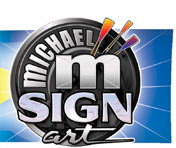| You are not logged in. | login to customize your own personal play list |
“West End Blues” by Louis Armstrong |
| United States Federal Trade Commission forbids anyone under 13 from viewing these music videos! |
| You are not logged in. | login to customize your own personal play list |
“West End Blues” by Louis Armstrong |
| United States Federal Trade Commission forbids anyone under 13 from viewing these music videos! |
 |
 |
 |
 |
You need Flash player 8+ and JavaScript enabled to view this video.
|
 |
 |
   |
 |

song info “West End Blues” by Louis Armstrong and His Hot Five is a famous jazz song from 1928.
Artist: Louis Armstrong and His Hot Five Genre: jazz, blues Composer: Copyright © 1928 Joe “King” Oliver Lead Vocals: Louis Armstrong Banjo: Mancy Carr Piano: Earl Hines Drums: Zutty Singleton Clarinet: Jimmy Strong Trumpet: Louis Armstrong Trombone: Fred Robinson Recorded: 1928 Released: 1928 This song is the number two (2) greatest 1920s popular song according to Digital Dream Door’s Bruce. Other Websites: What do I know...?, a musical analysis of the song.Number of listens: 27664 Current rank: 124 (updated weekly) Highest rank: 112 (play the video all the way through to register a vote for this song) Translations courtesy of Apple and Google. |
||
Summary quotation from Wikipedia:
“West End Blues” is a multi-strain twelve-bar blues composition by Joe “King” Oliver. It is most commonly performed as an instrumental, although it has lyrics added by Clarence Williams.
King Oliver and his Dixie Syncopaters made the first recording for Brunswick Records on June 11, 1928.[1] An early vocal version was waxed by Ethel Waters.
The “West End” of the title refers to the westernmost point of Lake Pontchartrain in Orleans Parish, Louisiana. In its heyday, it was a thriving summer resort with live music, dance pavilions, seafood restaurants, and lake bathing.
By far the best known recording of “West End Blues” is the 3-minute-plus, 78 RPM recording made by Louis Armstrong and His Hot Five in 1928.
Armstrong plays trumpet (and does some scat singing) backed by a band that included the pianist Earl Hines. Armstrong played an eight-bar trumpet solo near the end of the record.
Other portions of this record also in high regard include the trumpet introduction by Armstrong that begins the song - this cadenza incorporates an almost syncopated opening, the wordless ‘scat’ singing chorus by Armstrong where he accompanies and varies a melody played by the clarinetist, and a piano solo by Hines. The number is closed by a metallic click by drummer Zutty Singleton.
This recording was inducted in the Grammy Hall of Fame in 1974.
Jazz writer and historian William Russell has commented that other jazz trumpeters would be better off avoiding the too frequent imitations of Armstrong’s introduction on the number; while the most virtuosic may have the technical ability to duplicate Armstrong’s notes, they still suffer in comparison to Armstrong’s feeling and originality.
—from Wikipedia (the Wikipedia:Text of Creative Commons Attribution-ShareAlike 3.0 Unported License applies to Wikipedia’s block of text and possible accompanying picture, along with any alterations, transformations, and/or building upon Wikipedia’s original text that ThisSideofSanity.com applied to this block of text)
The Americans with Disabilities Act (ADA) and U.S. Government Section 508 of the Rehabilitation Act of 1973 require that web sites provide transcripts of audio for the deaf.
We will be adding lyrics to all songs as fast as we can. Please be patient.
Pipaluk: Eu amo esta canção.
To submit a comment, use the form below:
Please use the form (with the delay for a human to inspect it) because this website is attacked by more than 20 spam attempts per minute. The only way to keep you safe from the spam is by having human review.
 |
  |
|
If you spot an error in fact, grammar, syntax, or spelling, or a broken link, or have additional information, commentary, or constructive criticism, please contact us.
Copyright © 2014 Milo. All rights reserved. Todos Derechos Reservados. The copyrights on all source code and the data base belong to Milo and are used on this web site by permission.
The source code is at OSdata.com, released under Apache License 2.0.
Copyright 2012, 2013, 2014 Milo
Licensed under the Apache License, Version 2.0 (the “License”); you may not use this file except in compliance with the License. You may obtain a copy of the License at:
http://www.apache.org/licenses/LICENSE-2.0
Unless required by applicable law or agreed to in writing, software distributed under the License is distributed on an “AS IS” BASIS, WITHOUT WARRANTIES OR CONDITIONS OF ANY KIND, either express or implied. See the License for the specific language governing permissions and limitations under the License.
Enjoy the This Side of Sanity website Twitter feed.
Enjoy the This Side of Sanity Twitter feed.

|
player artwork by michaelm